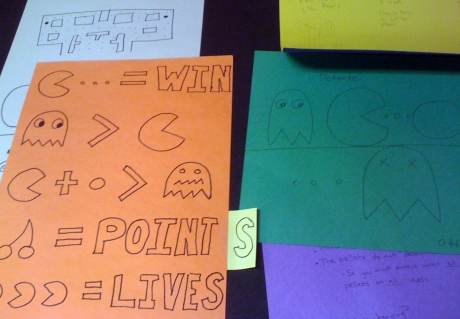
how and why to iterate + a game modification exercise
Iterative design
In the syllabus I shared in my last How I Teach Game Design post, graded assignments are given out on one week, and then one or two or three weeks later, they are due. So what happens in-between, during the actual work time? The answer is: the iterative design process.
Iterative design means a process focused on playtesting. You produce a playable prototype of a game as quickly as possible, then playtest the prototype, and you decide how to evolve the game based on the experience of the playtest. One way of understanding iterative design would be its opposite: a designer who works out all of the details of a game in advance, and creates a final set of rules and other materials without ever actually playing the game.
Of course, this caricature is absurd: no game designer I know has ever released a game without playtesting it. But I do have a particularly strong emphasis on iterative design in my teaching and my creative practice as a designer. The game designer Kevin Cancienne once called me a “playtesting fundamentalist’ – and perhaps he’s right. (So much for my stance against fundamentalism.)
What’s the big deal about iteration? The behavior of complex, interactive systems – like games – is incredibly difficult to predict. You generally cannot know exactly what players are going to do once they start playing your game. The only way to find out is to actually build some primitive version of your game, have people play it, and see what happens. Each time you playtest, you find out what does and doesn’t work, make some adjustments, and then play again. That’s why it is called the iterative process – you create successive versions, or iterations, of your game as you go. Read the rest of this entry »





